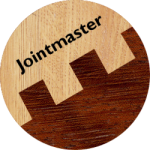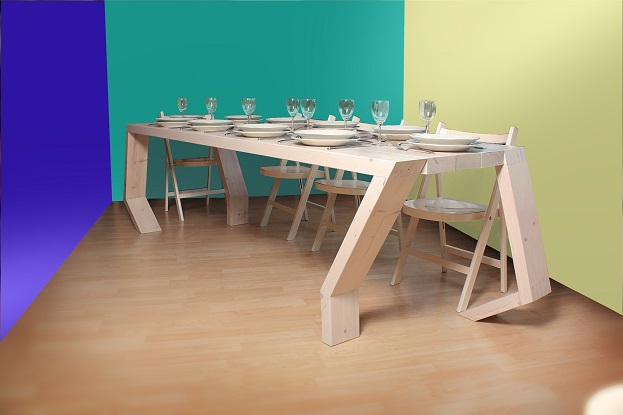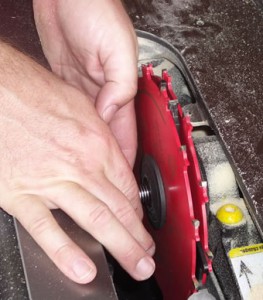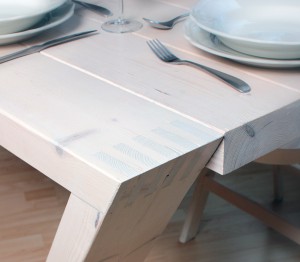Dear Golem,
Our mission is to help you create a so-called finger/ box or bridle joint using modern technology in a cheap yet reliable way. A finger joint is a type of wood-joint as shown below. The fingers have to fit so tight that the two pieces of wood become one.
Why would you need a finger joint or box joint ?
There are several reasons:
- The box joint is more decorative compared to a bolt/ screw.
- If you bolt/ screw wood without glue, you get peak forces near the bolt/ screw. After some load cycles your connection breaks. For this reason you need glue.
- Glue can only handle shear force. For this reason you need either bolts/ screws or finger joint flanges that handle the tension forces that always exist near glue connection edges.
- Even if you bolt/ screw your wood connection with glue, you need more surface area for your joint because there will still be peak forces near the bolt/screw. For a given load, a well designed finger/ box joint will always be lower in mass than a bolted joint.
- A bolt/ screw has a different thermal/ moisture expansion than the wood. For this reason after a few seasons, the connection gets loose. A finger joint has the same thermal/ moisture expansion (given that you use the same wood in the joint) and thus will suffer less from this phenomenon.
To prevent tension forces in the glue, the box joint/ finger joint has to be as tight as possible. Note that if the fit is too tight, it will be almost impossible to hammer the joint together.
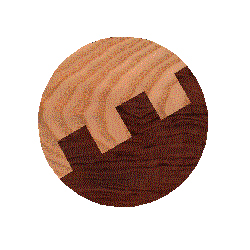 Creating tight fit wood joints is difficult because:
Creating tight fit wood joints is difficult because:
– A very small misfit results in loss of strength of the wood-joint
– A very small misfit can also result in the pieces of wood not fitting together at all.
– Saw/ mill dimensions vary due to wear and tear
– Saw/ mill reacts different to softer/ harder types of wood.
Due to these difficulties, a finger joint is mostly made using jigs or specialized machinery and a hand-operated mill. Also so-called “stacked dado blade sets” (See picture below) are used to create what is then sometimes called a “box-joint”.
Now if the finger joint teeth become bigger, it becomes more difficult to make a tight wood-joint. And now the joint is called a so-called “bridle joint” or “open tenon” joint. See picture below
We present the Jointmaster concept that is both cheap, easy and usable on a variety of machines (mill, saw) where the saw blade can be left in place to saw/ mill finger joint, box joint or bridle joint. An example video is shown below using a table saw setup with Android phone.
Be smart, start building your Jointmaster now.
Using the Jointmaster software you can dimension the box joint dimensions up to 0.01 mm. The stepmotor can reach higher accuracy but at a certain point your sawing jig is not stiff enough/ you run into backlash problems. Note that the saw is always cutting at the same place. Thus you can very effectively remove sawdust.
Please read-on in the next post.
